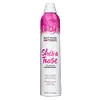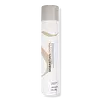What's inside
What's inside
 Key Ingredients
Key Ingredients

No key ingredients
 Benefits
Benefits

 Concerns
Concerns

 Ingredients Side-by-side
Ingredients Side-by-side

Sd Alcohol 40-B
AstringentHydrofluorocarbon 152a
Butyl Ester Of Pvm/Ma Copolymer
PEG/PPG-17/18 Dimethicone
EmulsifyingAminomethyl Propanol
BufferingPhenyl Trimethicone
Skin ConditioningPyrus Malus Fruit Extract
Skin ConditioningSaccharum Officinarum Extract
MoisturisingTrifolium Pratense Flower Extract
AstringentHoney Extract
HumectantBambusa Vulgaris Leaf Extract
Skin ConditioningPanthenol
Skin ConditioningWater
Skin ConditioningPropylene Glycol
HumectantTocopheryl Acetate
AntioxidantBenzophenone-4
UV AbsorberParfum
MaskingSd Alcohol 40-B, Hydrofluorocarbon 152a, Butyl Ester Of Pvm/Ma Copolymer, PEG/PPG-17/18 Dimethicone, Aminomethyl Propanol, Phenyl Trimethicone, Pyrus Malus Fruit Extract, Saccharum Officinarum Extract, Trifolium Pratense Flower Extract, Honey Extract, Bambusa Vulgaris Leaf Extract, Panthenol, Water, Propylene Glycol, Tocopheryl Acetate, Benzophenone-4, Parfum
Alcohol Denat.
AntimicrobialHydrofluorocarbon 152a
Butyl Ester Of Pvm/Ma Copolymer
Glycerin
HumectantTetrahydroxypropyl Ethylenediamine
Octylacrylamide/Acrylates/Butylaminoethyl Methacrylate Copolymer
PEG-75 Lanolin
EmollientAminomethyl Propanol
BufferingParfum
MaskingPanthenol
Skin ConditioningLinoleamidopropyl Ethyldimonium Ethosulfate
Ethylhexyl Methoxycinnamate
UV AbsorberSodium PCA
HumectantDimethyl Lauramine Isostearate
EmollientAlcohol Denat., Hydrofluorocarbon 152a, Butyl Ester Of Pvm/Ma Copolymer, Glycerin, Tetrahydroxypropyl Ethylenediamine, Octylacrylamide/Acrylates/Butylaminoethyl Methacrylate Copolymer, PEG-75 Lanolin, Aminomethyl Propanol, Parfum, Panthenol, Linoleamidopropyl Ethyldimonium Ethosulfate, Ethylhexyl Methoxycinnamate, Sodium PCA, Dimethyl Lauramine Isostearate
Ingredients Explained
These ingredients are found in both products.
Ingredients higher up in an ingredient list are typically present in a larger amount.
Aminomethyl Propanol is used to adjust the pH of products. It is also used as a base to create other organic compounds. Having a balanced pH is important for protecting your skin.
Aminomethyl propanol is safe to use in cosmetics up to 1%. It is soluble in water.
We don't have a description for Butyl Ester Of Pvm/Ma Copolymer yet.
We don't have a description for Hydrofluorocarbon 152a yet.
Panthenol is a common ingredient that helps hydrate and soothe the skin. It is found naturally in our skin and hair.
There are two forms of panthenol: D and L.
D-panthenol is also known as dexpanthenol. Most cosmetics use dexpanthenol or a mixture of D and L-panthenol.
Panthenol is famous due to its ability to go deeper into the skin's layers. Using this ingredient has numerous pros (and no cons):
Like hyaluronic acid, panthenol is a humectant. Humectants are able to bind and hold large amounts of water to keep skin hydrated.
This ingredient works well for wound healing. It works by increasing tissue in the wound and helps close open wounds.
Once oxidized, panthenol converts to pantothenic acid. Panthothenic acid is found in all living cells.
This ingredient is also referred to as pro-vitamin B5.
Learn more about PanthenolParfum is a catch-all term for an ingredient or more that is used to give a scent to products.
Also called "fragrance", this ingredient can be a blend of hundreds of chemicals or plant oils. This means every product with "fragrance" or "parfum" in the ingredients list is a different mixture.
For instance, Habanolide is a proprietary trade name for a specific aroma chemical. When used as a fragrance ingredient in cosmetics, most aroma chemicals fall under the broad labeling category of “FRAGRANCE” or “PARFUM” according to EU and US regulations.
The term 'parfum' or 'fragrance' is not regulated in many countries. In many cases, it is up to the brand to define this term.
For instance, many brands choose to label themselves as "fragrance-free" because they are not using synthetic fragrances. However, their products may still contain ingredients such as essential oils that are considered a fragrance by INCI standards.
One example is Calendula flower extract. Calendula is an essential oil that still imparts a scent or 'fragrance'.
Depending on the blend, the ingredients in the mixture can cause allergies and sensitivities on the skin. Some ingredients that are known EU allergens include linalool and citronellol.
Parfum can also be used to mask or cover an unpleasant scent.
The bottom line is: not all fragrances/parfum/ingredients are created equally. If you are worried about fragrances, we recommend taking a closer look at an ingredient. And of course, we always recommend speaking with a professional.
Learn more about Parfum